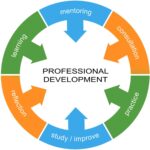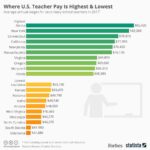From interactive whiteboards to educational apps, technology has become a staple in many classrooms across the country. However, with these advancements come both opportunities and challenges for teachers. Here’s a look at how technology is reshaping U.S. classrooms, based on the experiences and insights of educators.
Enhancing Student Engagement
One of the most significant benefits of technology in the classroom is its ability to enhance student engagement. Traditional teaching methods, while effective, often struggle to capture the attention of today’s tech-savvy students. Digital tools like educational games, interactive simulations, and multimedia presentations can make lessons more dynamic and engaging.
Teacher Insight: Many teachers report that incorporating technology into their lessons helps keep students interested and motivated. For instance, tools like Kahoot! and Quizlet allow teachers to create interactive quizzes that turn learning into a game. Students who might otherwise be disengaged find themselves more involved and eager to participate.
Personalized Learning
Technology also offers opportunities for personalized learning, allowing teachers to tailor lessons to meet the diverse needs of their students. Adaptive learning platforms can adjust the difficulty of tasks based on a student’s performance, providing extra help where needed and advancing when the student is ready.
Teacher Insight: Teachers appreciate how technology enables them to differentiate instruction more effectively. With tools like Google Classroom, they can assign different tasks to different groups based on their learning levels, ensuring that all students are challenged appropriately. This ability to customize learning paths helps students progress at their own pace, leading to better outcomes.
Challenges of Implementation
While the benefits of technology are clear, implementing it effectively can be challenging. Not all schools have equal access to technological resources, leading to disparities in educational opportunities. In some districts, outdated equipment, unreliable internet access, and a lack of technical support can hinder the successful integration of technology in the classroom.
Teacher Insight: Teachers in underfunded schools often struggle with the limitations of their resources. They might have to work with old computers or limited software options, which can be frustrating when trying to create engaging lessons. Additionally, teachers need ongoing professional development to keep up with the latest technological trends and tools, but this training isn’t always readily available.
Balancing Screen Time
Another challenge is finding the right balance between technology use and traditional teaching methods. While digital tools can enhance learning, excessive screen time can have negative effects, including reduced attention spans and diminished social skills.
Teacher Insight: Many teachers emphasize the importance of balancing technology with hands-on activities and face-to-face interactions. They integrate technology as a complement to, rather than a replacement for, traditional methods. For example, a teacher might use an interactive app to introduce a concept and then follow up with a group discussion or a hands-on project to reinforce learning.
The Impact of the COVID-19 Pandemic
The COVID-19 pandemic accelerated the adoption of technology in education, as schools across the country shifted to remote learning. This sudden change forced teachers to quickly adapt to new tools and platforms, often with little preparation or support.
Teacher Insight: Many teachers found the transition to online learning challenging, especially those who were less familiar with digital tools. However, the experience also highlighted the importance of technology in education and pushed educators to innovate and find creative solutions. As schools return to in-person learning, many of the digital tools adopted during the pandemic are continuing to play a role in the classroom.
Conclusion
Technology has undoubtedly become a vital part of education in the United States. While it presents numerous opportunities for enhancing learning and engagement, it also comes with its share of challenges. Teachers are at the forefront of navigating these changes, finding ways to effectively integrate technology while maintaining the core values of education. As technology continues to evolve, so too will the methods and strategies used in classrooms, ensuring that students are equipped with the skills they need for the future.


